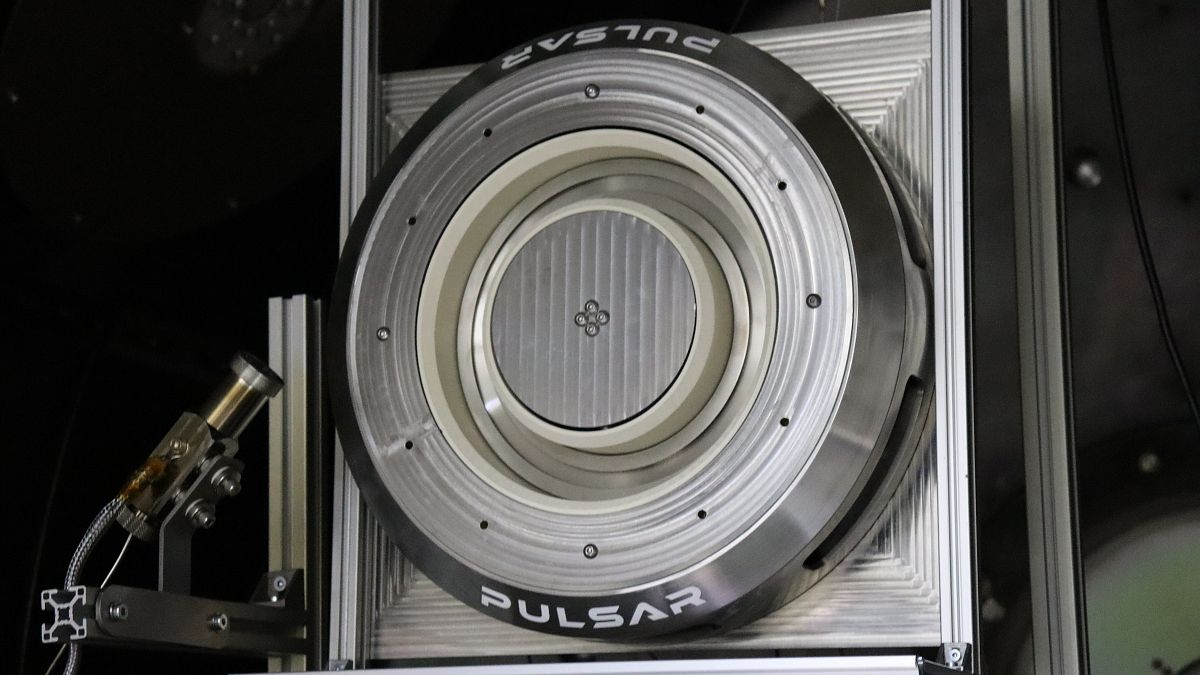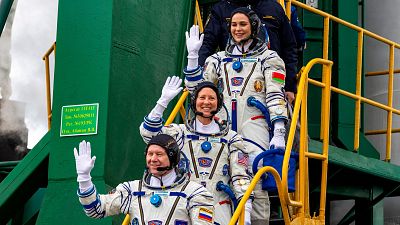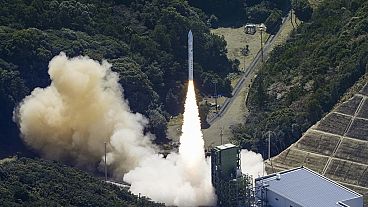Pulsar Fusion says there is a growing demand for larger, more powerful in-space propulsion systems as global launch services continue to expand.
As more and bigger satellites are sent into orbit, the aerospace industry is gearing up for larger in-space engines.
An "in-space propulsion system" is specifically designed to operate in the vacuum of space once a satellite is released from the rocket.
In January, British company Pulsar Fusion tested a 10 kW hall-effect thruster, which the company claims to be the largest engine of its kind ever tested in the UK.
According to the company, it’s over ten times larger than conventional 500 W engines and could "launch a new generation of super satellites".
Pulsar Fusion’s new hall-effect thruster uses electromagnetic fields to accelerate ionised gas at high speed to generate thrust using only a tiny amount of gas.
"We are talking about 30km a second in speed. So it's much more efficient than burning big tanks of rocket fuel, which you can do in space," Richard Dinan, the CEO of Pulsar Fusion told Euronews Next.
The test conducted at the University of Southampton was partially funded by the UK Space Agency.
Pulsar Fusion says there is a growing demand for larger, more powerful in-space propulsion systems as global launch services continue to expand their capabilities and orbital payloads are expected to increase.
"SpaceX has done a really great job at proving reliability and getting people into orbit. Once you're in orbit and you've been placed in orbit by SpaceX, you're on your own and you need a different type of propulsion system," said Dinan.
"And the reason we're doing it is because the demand is very apparent bigger engines are needed. Having the space agency behind it shows that this makes sense to them too".
These space engines can only be tested in a very high vacuum at several million degrees, making the test tricky.
"The reason that they're so hard to make on Earth is because if you imagine you have to test them in a vacuum, so you have to pump out all the air," said Dinan.
"And if these engines, the bigger they get, the more gas they fall. You've got to keep up with that. So as the gas is being pumped out the engine, your vacuum machines have got to be able to keep up with the engine".
'Electric propulsion system is the ideal choice'
When a chemical rocket launches from the ground, it uses chemical reactions to generate thrust by expelling high-speed exhaust gases.
Once in the vacuum of space, an efficient and fast propulsion system is needed as the terrestrial rocket propulsion system would very quickly run out of fuel if it were to be used in space.
Dinan says all satellites going in and out of orbit now need their own designated propulsion systems, and for that, electric is the ideal choice.
Instead of using chemical reactions, Pulsar Fusion’s hall-effect thruster is fired with Argon and designed to operate on Xenon and Krypton gas in orbit.
"It means that those engines can sit up there for years and they can be used to put your satellite into the right place. And also you might want to move orbit or you might want to de-orbit, meaning get your satellite back out of space, which is also very important as we try and clean up space," said Dinan.
The hall-effect thruster is now commercially available, but it requires bespoke testing for missions.
"Now that we've actually shown that the engine is working as expected, we're now actually talking to some big clients who are going to tell us how much of an appetite they want, how much they want to do the terrestrial testing, because it's going to be very expensive," said Dinan.
Pulsar Fusion hopes the launch of bigger satellites will help improve space mining, exploration, and communication significantly.
"I think at the moment a lot of these satellites haven't been very big for small companies…Now the cost of putting things into the space is coming down," he added.
"People talk about mining asteroids and all these more exciting missions can now start really feasibly working out how to do it. But they're going to need these bigger engines".
According to the Space Foundation’s latest space report, over 2,800 satellites were launched into orbit last year, marking a 23 per cent increase compared to 2022. This set a new record for the highest number of payloads ever deployed in a single year.
For more on this story, watch the video in the media player above.



